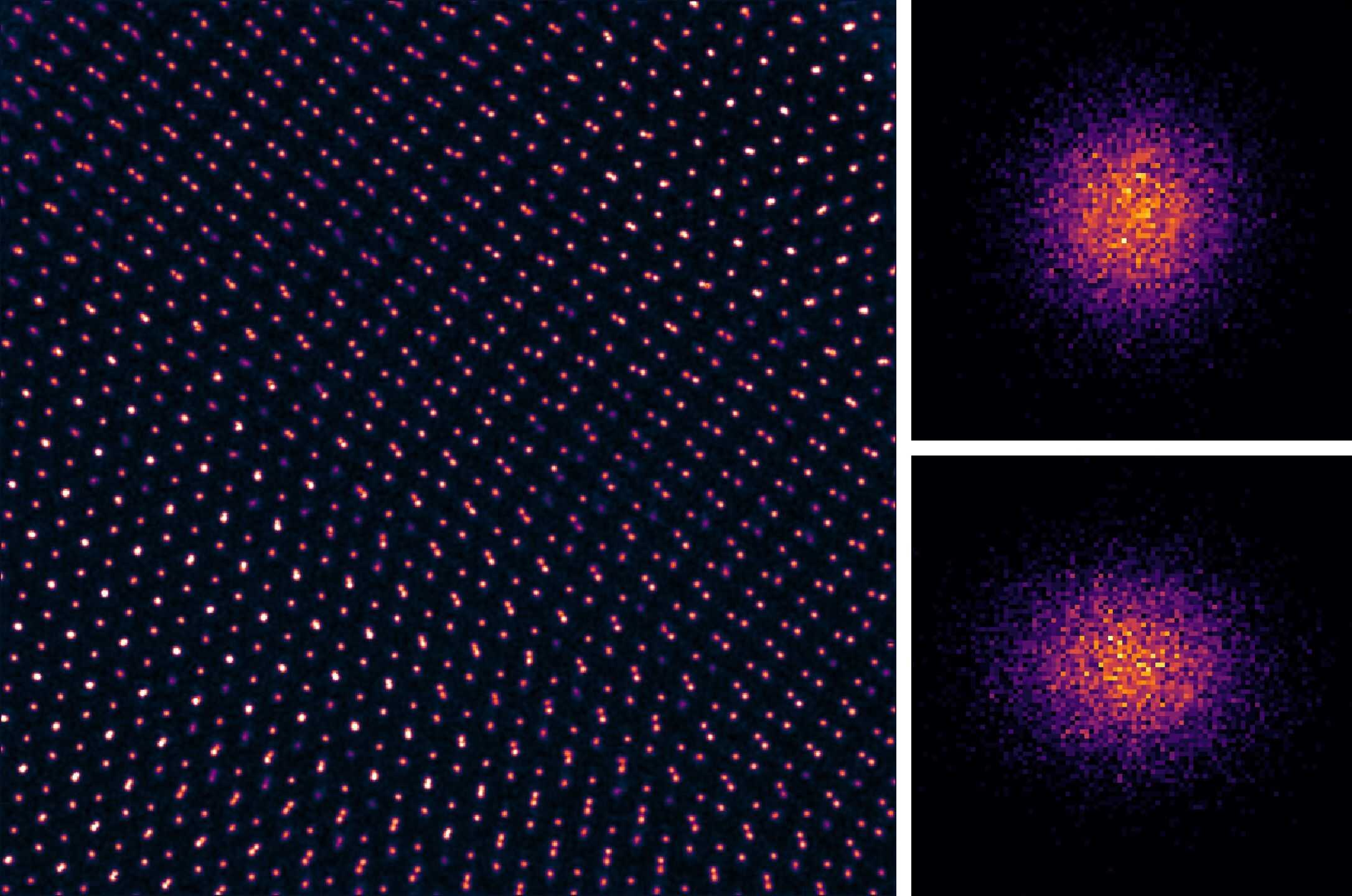Science
Researchers Capture First Images of Atoms’ Unique Vibrations

Researchers in the United States have achieved a groundbreaking milestone by directly imaging a class of low-energy atomic vibrations known as moiré phasons. This discovery confirms the existence of these vibrations, which were previously only theoretical, and establishes them as a primary mechanism for atomic vibrations in certain twisted two-dimensional materials. The implications of this work could significantly impact heat and charge transport, as well as the behavior of quantum phases in these materials.
Revolutionizing Understanding of Atomic Vibrations
According to Yichao Zhang from the University of Maryland, who co-led the study alongside Pinshane Huang from the University of Illinois at Urbana-Champaign, “Phasons had only been predicted by theory until now, and no one had ever directly observed them.” This research is published in the journal Science, marking an important advancement in the field of quantum materials.
When two sheets of two-dimensional materials are slightly twisted and stacked, they create a moiré pattern, forming a superlattice. This structure includes quasi-periodic regions where atoms align rotationally, separated by stacking faults known as solitons. These materials are recognized for exhibiting unique vibrational modes called moiré phonons, which depend on the twist angle between the layers and can alter the physical properties of the materials.
In addition to moiré phonons, the existence of phasons has been theorized but never directly observed until this breakthrough. The research team utilized a powerful microscopy technique known as electron ptychography, which achieved spatial resolutions as precise as 15 picometres. This unprecedented resolution allowed the researchers to detect subtle changes in atomic vibrations by analyzing the shape and size of individual atoms.
New Insights into Complex Two-Dimensional Systems
Zhang noted, “This meant we could map how atoms vibrate across different stacking regions of the moiré superlattice.” The findings revealed that atomic vibrations are not uniform; rather, atoms exhibited larger amplitudes in AA-stacked regions and anisotropic behavior at soliton boundaries, aligning with theoretical predictions for moiré phasons.
Despite Zhang’s extensive experience studying phonons with electron microscopy, previous limitations in imaging resolutions restricted her to nanometre scales. The realization that electron ptychography could allow for observations at picometre scales opened new avenues for exploration.
The motivation behind studying twisted two-dimensional materials lies in their potential to support exotic electronic phenomena, such as superconductivity and correlated insulating states. Yet, the role of lattice dynamics, particularly the behavior of phasons, has remained poorly understood. As Zhang explains, “The problem is that phasons are both extremely low in energy and spatially non-uniform, making them undetectable by most experimental techniques.” Their research aimed to push the boundaries of electron ptychography and validate findings through careful modeling and simulations.
This work not only expands the understanding of vibrations in complex two-dimensional systems but also opens the door to potential applications. Zhang envisions that harnessing these vibrations could lead to materials with programmable thermal and electronic properties, essential for future advancements in low-power electronics, quantum computing, and nanoscale sensors.
Furthermore, electron ptychography emerges as a powerful tool for investigating lattice dynamics across a variety of advanced materials. The research team is now employing this technique to examine how defects, strain, and interfaces influence phason behavior. Such imperfections are prevalent in real-world materials and can significantly affect performance. Zhang aims to capture how phasons respond to external stimuli, including temperature changes and applied fields, to deepen the understanding of their interactions with electrons and other excitations in quantum materials.
This research marks a significant step forward in the field of quantum materials, promising to reshape the landscape of material science and its applications in technology.
-

 Health3 months ago
Health3 months agoNeurologist Warns Excessive Use of Supplements Can Harm Brain
-

 Health3 months ago
Health3 months agoFiona Phillips’ Husband Shares Heartfelt Update on Her Alzheimer’s Journey
-

 Science2 months ago
Science2 months agoBrian Cox Addresses Claims of Alien Probe in 3I/ATLAS Discovery
-

 Science2 months ago
Science2 months agoNASA Investigates Unusual Comet 3I/ATLAS; New Findings Emerge
-

 Science1 month ago
Science1 month agoScientists Examine 3I/ATLAS: Alien Artifact or Cosmic Oddity?
-

 Entertainment5 months ago
Entertainment5 months agoKerry Katona Discusses Future Baby Plans and Brian McFadden’s Wedding
-

 Science1 month ago
Science1 month agoNASA Investigates Speedy Object 3I/ATLAS, Sparking Speculation
-

 Entertainment2 months ago
Entertainment2 months agoLewis Cope Addresses Accusations of Dance Training Advantage
-

 Entertainment4 months ago
Entertainment4 months agoEmmerdale Faces Tension as Dylan and April’s Lives Hang in the Balance
-

 World3 months ago
World3 months agoCole Palmer’s Cryptic Message to Kobbie Mainoo Following Loan Talks
-

 Science1 month ago
Science1 month agoNASA Scientists Explore Origins of 3I/ATLAS, a Fast-Moving Visitor
-

 Entertainment4 months ago
Entertainment4 months agoMajor Cast Changes at Coronation Street: Exits and Returns in 2025









